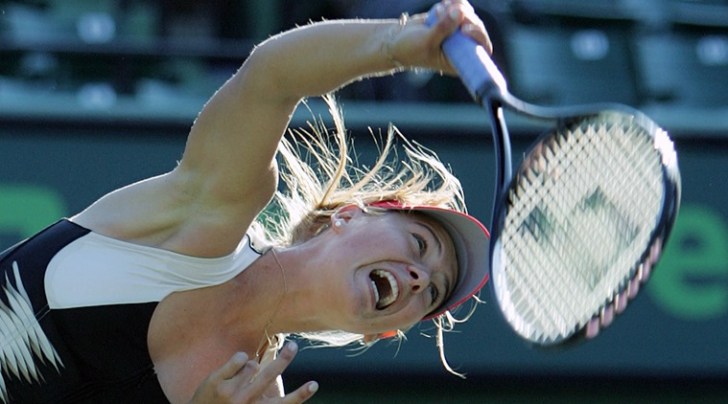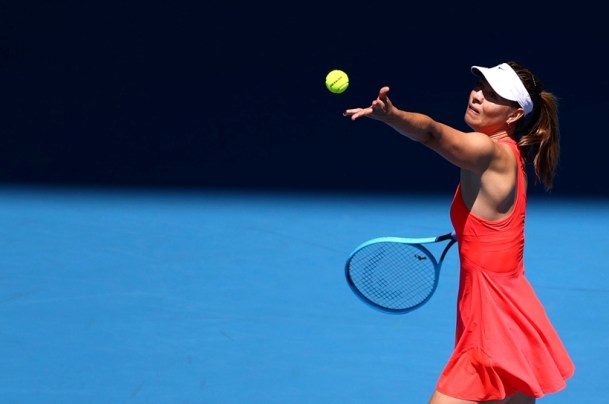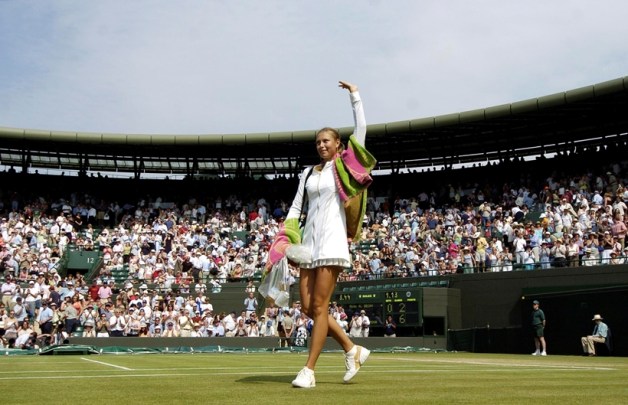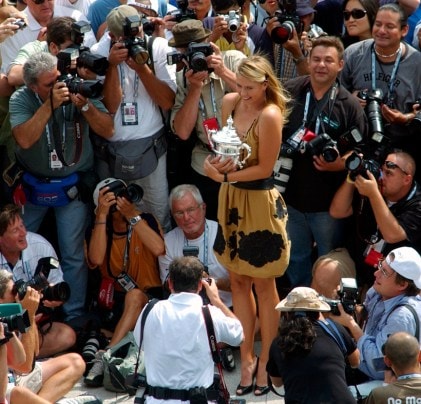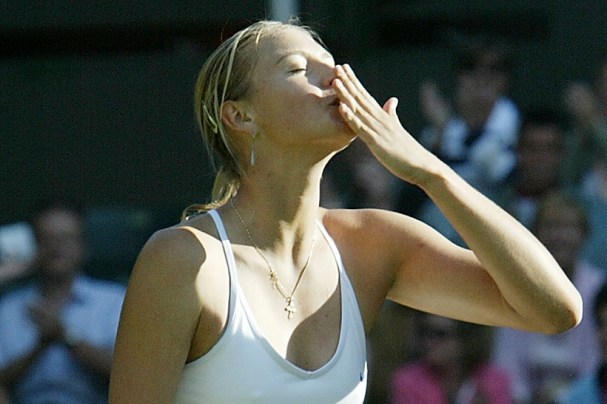Sharapova said she knew it was time to retire as she flew home to Los Angeles from Australia. Kobe Bryant’s death in a helicopter crash on Jan. 26 made it even clearer.
By Christopher Clarey
To understand why Maria Sharapova is retiring from professional tennis at age 32, it helps to know what she can no longer endure.
“I look at photos of myself and of the motion where I’m just about to hit the ball, and I’m in the air or just as I’m making contact,” she said Tuesday, “and I can’t even look at it because it makes me cringe. I have so much pain.”
The pain has been a near-constant companion over the last two years for Sharapova, a former No. 1 player who became one of the richest and most globally recognizable athletes of the 21st century but who found herself unable to return to the top of the game after a suspension for using a banned substance in 2016.
Since then, she has dealt with recurring tendon damage in her right shoulder and inflammation in her forearms that at times has made it excruciatingly difficult for her to even grip a racket, much less rip a forehand.
But she did not falter for lack of persistence. Quite the contrary, in her view.
“As I think you’ve seen throughout my career, my perseverance has been my greatest tool, my greatest strength,” she said in an interview. “But I’ve started feeling like it was becoming a weakness, because the stubbornness that was keeping me going was keeping me going for wrong reasons.”
She was suspended in 2016 for using meldonium, a newly banned drug developed for heart patients that Sharapova said she had been taking for years because of a magnesium deficiency, dizziness and a family history of diabetes. She claimed to be unaware that meldonium had recently been added to the World Anti-Doping Agency’s list of banned substances. Her suspension was ultimately cut from two years to 15 months on appeal, with an arbitration panel saying that Sharapova should not be considered “an intentional doper.”
She recently ruled out having another shoulder operation, but pushing through the pain just led to more pain. Her comeback lasted two seasons and finished with a first-round defeat to 19th-seeded Donna Vekic at the Australian Open on Jan. 20. At the end, Sharapova said she just felt an overwhelming “heaviness.”
“Fourteen hours of my day in the last six months have been just, like, caring for my body,” she said. “Before I get on the court every day I’m tied to like an ultrasound machine or another machine or a recovery unit.”
There will be no farewell tour.
“I don’t feel I need to go on the court for the entire world and every fan to know that this is my last time on the court,” Sharapova said. “Even when I was younger, it was not the way I wanted it to end.”
Sharapova said she knew it was time to retire as she flew home to Los Angeles from Australia. Kobe Bryant’s death in a helicopter crash on Jan. 26 made it even clearer.
“We were supposed to see each other like three days after the crash,” said Sharapova, who explained that Bryant had been an “incredible sounding board” throughout her career.
This time, she said, she had reached out for help in coping with her physical deterioration.
“I think we all seem at times in our journey like larger than life because of what we do, but everyone at the core is incredibly fragile,” she said of Bryant. “And if anything it just opens up your eyes to what really matters in life, so that was a moment where I had a really good think about my future as well.”
A 6-foot-2 Russian who punctuated her flat groundstrokes with piercing shrieks, Sharapova made one of the most extraordinary journeys in sports. If not for the Chernobyl nuclear disaster, she would surely not be a tennis star. Her parents, Yuri and Yelena, were living in Gomel in present-day Belarus in April 1986 when the reactor exploded in nearby Chernobyl. They eventually fled to Nyagan in distant Siberia to live near family. Sharapova was born there in April 1987, but Yuri soon moved the family to sunnier Sochi on the Black Sea, where he discovered tennis and passed it on to his only child.
In 1993, when Maria was 6 and post-Soviet Russia was in turmoil, she and her father moved to Florida with less than $1,000 in Yuri’s pocket. Martina Navratilova had noticed Maria’s potential at a Moscow clinic and recommended that she train abroad.
It was, in retrospect or not, a wild gamble. Sharapova, who was separated from her mother for more than two years because of U.S. visa restrictions, showed remarkable steel, drive and talent as she worked her way to the top at IMG Academy in Bradenton, Florida.
“The one thing I remember the most when I first saw her was the focus in practice, like every ball was like the finals of Wimbledon,” said Max Eisenbud, who became her agent.
Sharapova became a global star in 2004 by winning Wimbledon at age 17, upsetting top-seeded Serena Williams in a hard-hitting final. Sharapova won five Grand Slam singles titles in all, including the U.S. Open in 2006, the Australian Open in 2008 and the French Open in 2012 and 2014, despite clay being her least-favored surface.
“I feel like a cow on ice,” she said of playing on clay in 2007, demonstrating a wit that was often impossible to detect on tour as she slammed no-nonsense winners and avoided forming bonds with her peers to maintain a competitive edge.
She won 36 tour singles titles in total, an Olympic silver medal in singles in 2012 and the Fed Cup title with Russia in 2008. She was ranked No. 1 for the first time in August 2005 and spent 21 weeks in the top spot.
But she arguably made a more indelible mark off court. She was the world’s highest-earning female athlete for 11 consecutive years, according to Forbes. She earned the majority of her income in endorsements from companies like Nike and Evian, started her own candy company and reportedly earned close to $30 million in 2015.
“She really helped the sport a lot because she brought a lot of attention to it,” Billie Jean King, one of the WTA Tour’s founders, said on Tuesday. “Not only was she a great player, she did very well off the court.”
After her suspension, she returned in April 2017 with a point to prove. She met resistance, though, as some tournament officials chose not to offer her invitations to play and some players expressed discontent when she was granted wild cards, arguing that it was unfair for anyone returning from a ban to receive such a boost.
But Sharapova could not rise again — despite occasional flashes of form, including a stirring first-round victory over second-seeded Simona Halep at the 2017 U.S. Open and a tour title in China at a lower-level event in October 2017.
The fact that she was less successful after her suspension could lead to the conclusion that she was less successful without meldonium. She rejects that idea, arguing that she was already battling injuries before the ban.
Did forgoing meldonium have any impact on her results?
“Zero,” she said grimly. “My shoulder has been an issue since I was 21.”
Sharapova had her first shoulder operation in 2008 to repair a torn rotator cuff and another, minor procedure in February 2019 to repair a damaged tendon and a small labrum tear. But the shoulder kept fraying, and Sharapova has also struggled with intersection syndrome in both forearms.
“It basically comes on with a lot of repetition, and I have a bump on my forearm, and I can’t lift my hands, and it starts with one hand then it goes to the other,” she said. “It’s like shin splints in my forearms.”
Sharapova, now down to No. 373 in the world rankings, played the way she practiced: at full volume and intensity, throwing herself into the challenge with evident relish despite some technical and physical shortcomings.
Her forehand was considered enough of a liability in her youth that she considered hitting it with her left hand instead of her right. She seldom liked playing at the net, and her foot speed could not compare to that of rivals like the Williams sisters and Halep.
But she had a fluid, world-class two-handed backhand and a deep understanding of how to construct a baseline point. She also had one of the most fearsome serves in the game before her shoulder problems.
Above all, she had a point-to-point intensity similar to men’s star Rafael Nadal.
“The girl has no fear,” Robert Lansdorp, one of her childhood coaches, said when Sharapova made her tour debut at age 14 in Indian Wells, California, in 2002.
Many would echo Lansdorp’s statement through the years, but there were obstacles Sharapova still could not overcome, including Serena Williams, who after the defeat at Wimbledon and another in the 2004 tour championships, never lost to her again. Their rivalry has ended with Williams holding a 20-2 head-to-head record and playing on at age 38.
This era has belonged to Williams, no doubt, but Sharapova made herself heard loud and clear just the same. It is time now for new challenges and pleasures — for more time with her boyfriend, British businessman Alexander Gilkes, and for her plans to study architecture later this year as well as focusing on growing her candy businesses.
Sharapova skied last week for the first time, hitting the slopes in Montana, and then sent a video to her former practice partner, the rising Italian star Jannik Sinner, who was once a promising Alpine skier.
“He wrote to me, and he said, ‘I think you should keep playing tennis,’” Sharapova said with a loud laugh.
For now and very likely for good, Sharapova remains unpersuaded.
“Look, would I have loved to have a sixth, a seventh, an eighth Grand Slam trophy?” she said. “That number sounds better, but I could have had zero when I started, and I got myself to a pretty incredible place.”
? The Indian Express is now on Telegram. Click here to join our channel (@indianexpress) and stay updated with the latest headlines
For all the latest Sports News, download Indian Express App.
Source: Read Full Article




